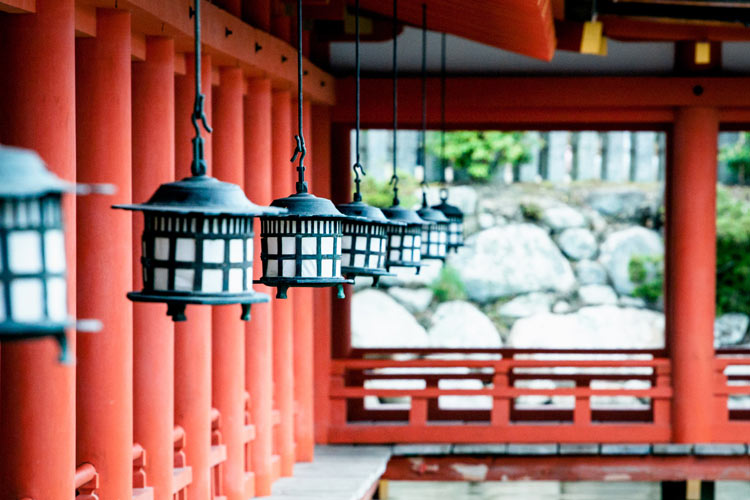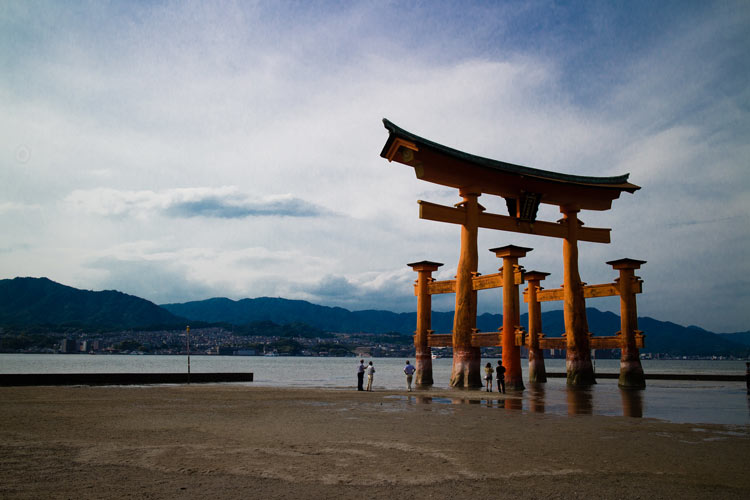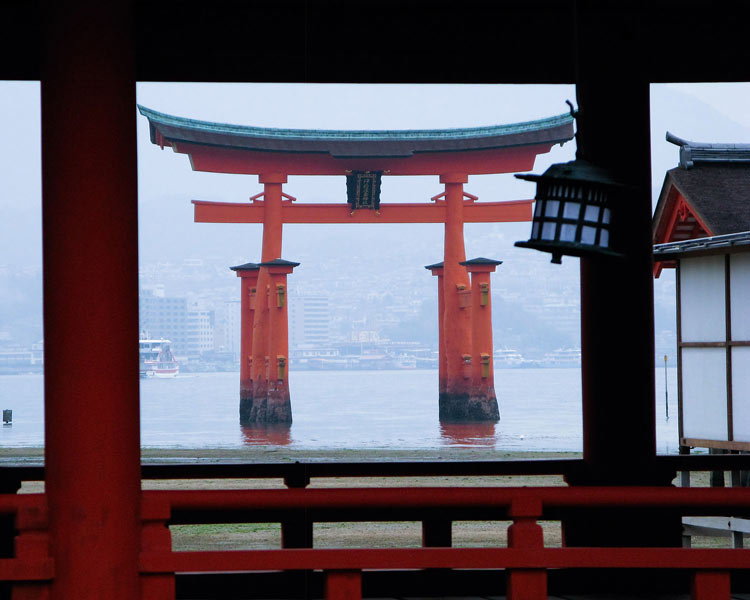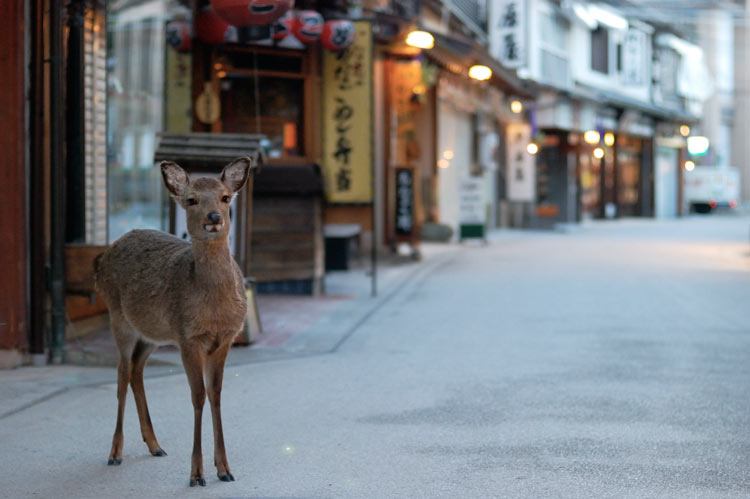
Hiroshima is a global destination because of the existence of Atomic Bomb Dome, a World Heritage Site identified in 1996. The bombed area has another World Heritage Site, Itsukushima Shrine, where its bedding is submerged in seawater at full tide. From the shrine pavilion, you can also see a huge vermillion torii gate towering on the sea surface.

Itsukushima Shrine on the Seashore
The Atomic Bomb Dome is located in the central part of Hiroshima City, the capital of Hiroshima Prefecture, and is easily accessible from JR Hiroshima Station as the front door of the prefecture, where a bullet train makes a stop.
Itsukushima Shrine, however, requires you to make a little side trip from the terminal station, because the World Heritage shrine is on the seashore of the remote Itsukushima Island (commonly called Miya-jima Island).
Although Hiroshima City faces a bay and the sacred island with the shrine is in the bay, travelers inevitably have to move to some port and take a ferry across a strait.

Unique Island Rated One of the Most Scenic Spots in Japan
What makes this island an important national cultural property is the landscape change. The shrine was built in 593 and later extended in a shorefront of the island.
Part of the foundations of the building and huge gate sink in water. At low tide, you can take a stroll on the moist sea bed to the huge torii gate standing offshore; and at high tide, you can look closely at tidal shifts from a veranda-like porch of the shrine and feel the salty air.
These unique personalities of the island contribute to its rating as one of the three most scenic spots in Japan.

Historical Townscape, Delicious Cuisine, Steamed Bean-Jam Buns and Wild Deer
The surroundings of the shrine also have a lot to offer. Along the anterior approach to the World Heritage Site, a medieval shrine town has been formed since the Kamakura era (1192-1333).
Souvenir stores, restaurants and cafés await international travelers. Temples and other shrines also dot the island, and there are walking trails to the peak of Mount Misen (535 meters, 1,755 feet) the highest summit of the island.
You will be also amazed at the number of feral deer walking through the tourist site. Oyster cultivation also is developing and you can enjoy delectable seafood. Steamed bean-jam buns (called momiji-manju, meaning maple leaf shaped buns) are standard fare for travelers.
The established shop Fujii-ya, founded in 1925 on Itsukushima Island (Miya-jima Island), offers beautiful and dainty momiji-manju.

If You Go
Itsukushima Island (Miya-jima Island) encompasses 31 kilometers (19 miles) and you can access it in a number of different ways.
The Atomic Bomb Dome sits along a broad river and a river port near the dome is open to travelers.
If you prefer boat travel, a 45-minute ferry ride brings you from the dome to Itsukushima (Miya-jima). Round-trip tickets are 3,600 yen (about $30).
If you start to travel to Itsukushima Shrine from JR Hiroshima Station, moving to JR Miyajima-guchi Station on JR Sanyohonsen Line, walking to the ferry port and heading to the island by water are ideal.
This transport requires about 50 minutes, which is the quickest route from JR Hiroshima Station, the front door of Hiroshima.
The transport charge totals 1,180 yen (about $10) for a round trip.
From the ferry port to Itsukushima (Miya-jima island), you have to choose one ferry from two options. Both of the fares, migration time, services and timetables are similar, but I would recommend JR Ferry, not Matsudai Kisen Ferry, for novices because only JR Ferry runs close to the colossal shrine gate standing offshore. Travelers can take pictures of the gate on a ship without a telephoto lens.
It is fabulous to visit any time, but taking a ferry at high tide is highly recommended.
Author Bio: Masayoshi Sakamoto(坂本正敬)is a Japanese writer and translator based in Toyama, Japan. He writes news and columns for a number of publications and web magazines. He’s also in preparation for contributing to a new local magazine, HokuRoku as the editor-in-chief.
- How to Get Around in Sydney: A Local’s Guide to Traveling Around Sydney - April 24, 2024
- The Low-Key Magic of Ghent, Belgium - April 22, 2024
- Discover the Hidden Charm of Extremadura in Spain - April 20, 2024
